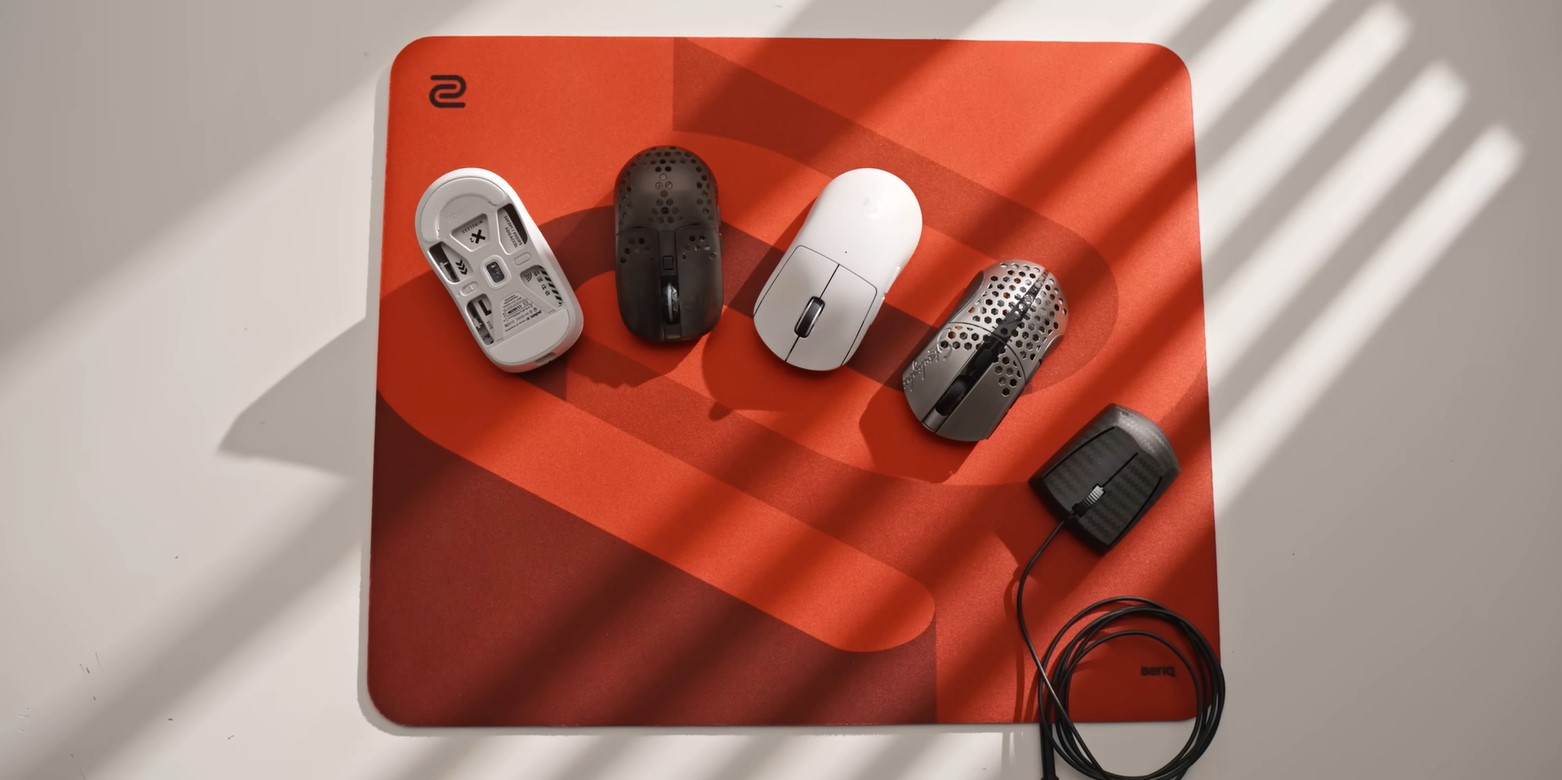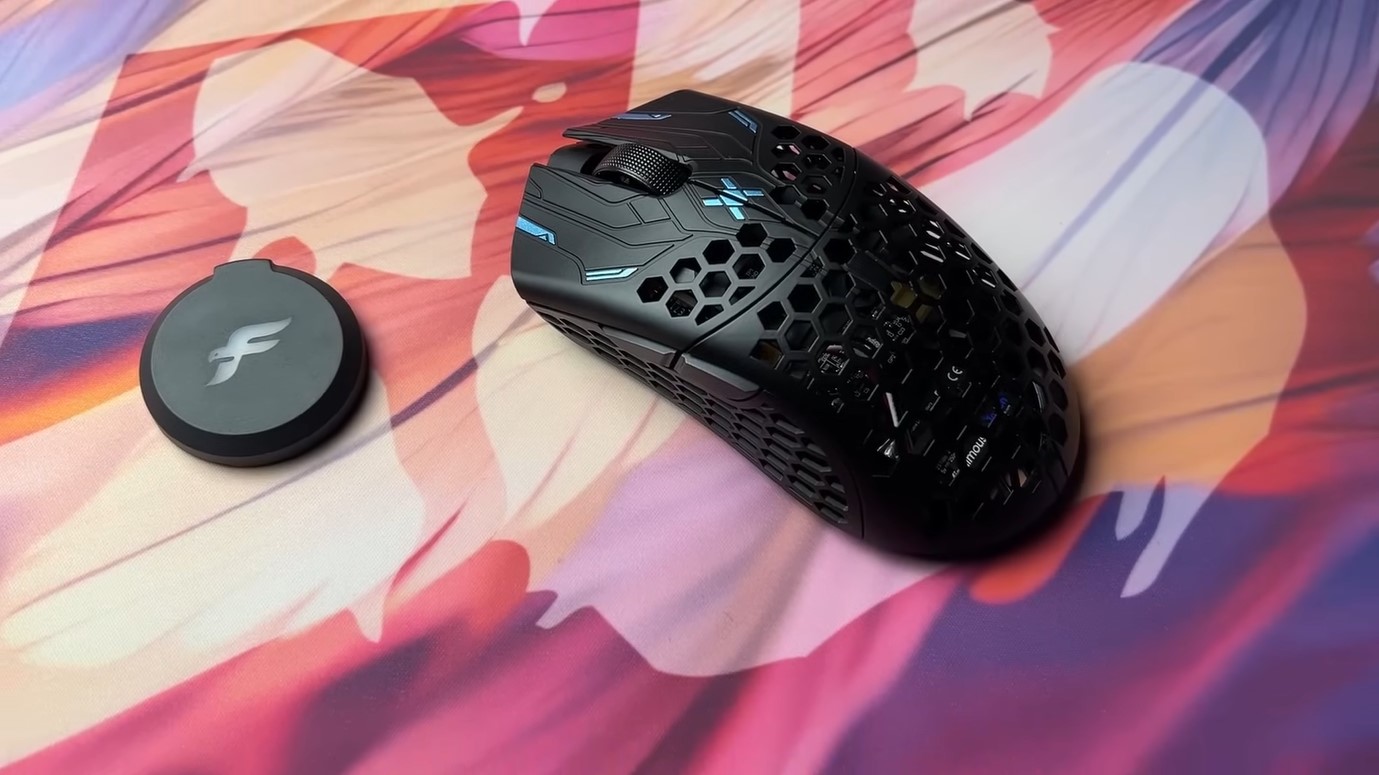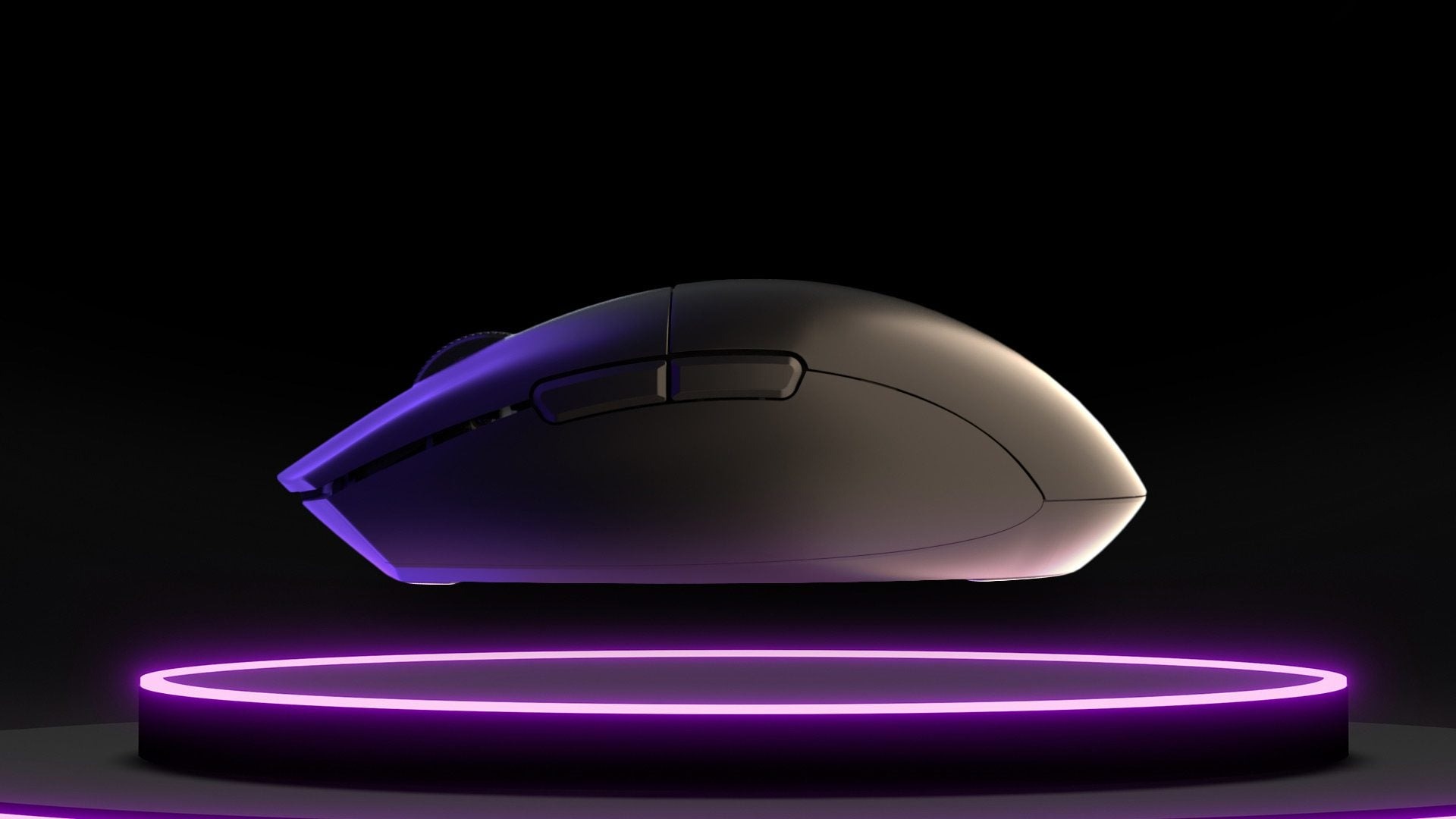- Lighter mice below 40g are extremely responsive that allow you to make snappier micro corrections that lead to better flicks and effortless tracking.
- Since it is super lightweight, it feels like you aren’t holding anything, and the lift-off is also seamless, which significantly reduces the strain.
- But lighter ones require a claw or fingertip grip if you want to operate it with full control.
There’s been a lot of buzz about mouse weights. Some people lean towards the heavier ones, while others prefer lighter ones. For the people who’re into lighter mice, there’s an ongoing quest to go even lighter. But does that actually equate to better performance? Let’s find out.

Going Below 40g: Is There Any Difference?
Lightweight mice have existed for quite some time, and they usually range from 60g to 80g. The lightest is usually around the 60g mark, but now brands have shifted to even lighter ones as per people’s demand.
Popular Demand
We see this pattern taking place everywhere. Logitech’s G Pro 2 Lightspeed was loved by the masses and weighed 76g, but then they had to innovate, so they released the G Pro X Superlight 2, which shaved off around 18g and weighed 58g.
Lighter = More Responsive
But what about going even below the 40g mark? Well, it’s plain physics that the lighter the mouse, the less the inertia. This means you don’t have to exert much force to get the same result as a slightly heavier mouse.
It does make a difference because even shaving 10g is a drastic change, let alone entirely 20g if you compare it with a 60g mouse. With this, you get precise control over your aim, and micro-adjustments feel snappier.
Subconscious Ease Of Control
Not only that, but flicking becomes a breeze, especially because the lift-off is almost effortless, and the mouse glides across your pad seamlessly. Believe it or not, but lifting even a slightly heavier mouse is a slight obstacle, as if your brain has to train itself to remember the action as muscle memory.
But once you switch to a mouse lighter than 40g, you’d be surprised to find how easy it has become to lift and reposition it. The subconscious ease of control is real with these mice.

Weightless Tracking
The best part about it is that you’d feel like you’re holding nothing. This equates to a weightless tracking in games, which would feel like cheating because you won’t feel any resistance.
If you pair these mice with a glass mousepad, it’s like putting your mouse on steroids; it doesn’t get better than that. Now, the small friction that a cloth mousepad had is also removed, which would give you more precision.
Reduced Strain
Another great thing about using these mice is how much of a relief they’ll feel compared to a 60g mouse. You’d think that it’s going to have the same level of comfort, but a lighter mouse relieves a surprising amount of strain.

Brands Jumped On
Many brands have jumped on to create their own versions of extremely light weight mouse, with Finalmouse UltralightX being one of the most popular contenders, weighing only 38g.
Currently, the official world’s lightest mouse is the Zaunkoenig M2K, which comes in a fully carbon case and a compact design that feels alienated but gets the job done since it weighs only 24g.
Should You Make The Switch?
With the benefits of using an extremely light weight mouse, there are a lot of things that you need to take into consideration before you make the switch, either from a heavy mouse or lighter one.
Holes = Dust Magnet
Firstly, most brands opt for designs with lots of cut-out holes in order to reduce the weight of the mouse. While many big brands claim to have dust-resistant designs, they still tend to get dust and debris inside the circuitry.’

Not As Comfortable
Moreover, the design with the hexagons or holes may compromise comfort since your palm won’t be greeted with a plain, hard back mouse design. This can be a downside for most people who are comfortable with the standard mouse’s design.
Claw Or Fingertip Grip Is A Must
Another thing to keep in mind is that lighter mice tend to work better with a fingertip or claw grip because it gives you the most amount of control. So, if you’re an avid palm grip user, you might feel out of control with an ultra-light mouse.
Verdict
If you’re switching from a very heavyweight mouse that ranges from 100g up to 150g, then it is better to switch to a lighter mouse (60g to 80g) first, then adjust to it. If you’re already using a lighter one and have a claw or fingertip grip, then you can switch to an even lighter one without any issue.
Thank you! Please share your positive feedback. 🔋
How could we improve this post? Please Help us. 😔
[Comparisons Expert]
Shehryar Khan, a seasoned PC hardware expert, brings over three years of extensive experience and a deep passion for the world of technology. With a love for building PCs and a genuine enthusiasm for exploring the latest advancements in components, his expertise shines through his work and dedication towards this field. Currently, Shehryar is rocking a custom loop setup for his built.
Get In Touch: shehryar@tech4gamers.com


 Threads
Threads

